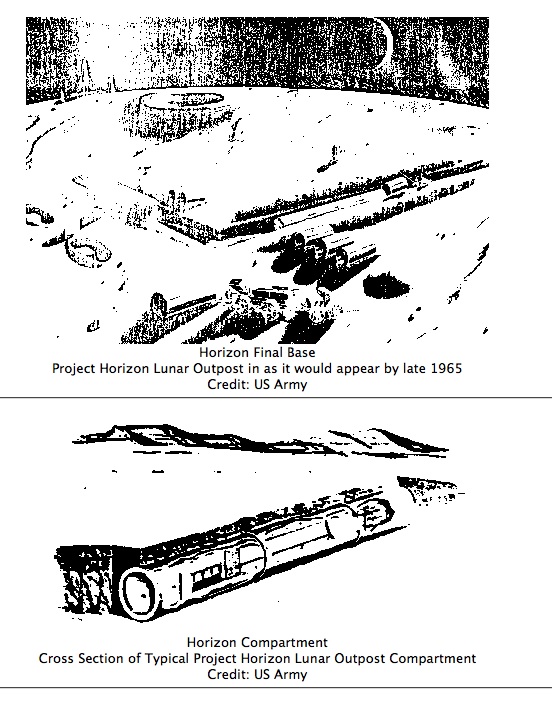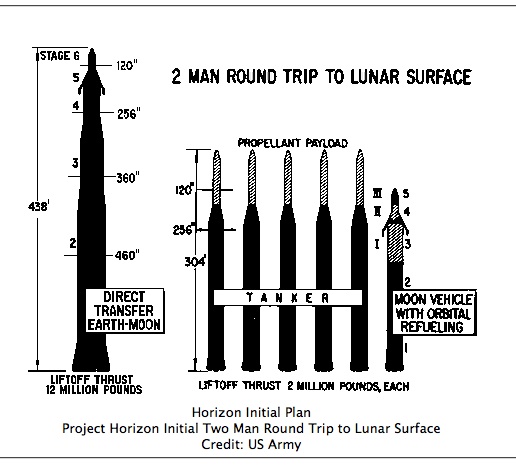|
by Dave Fischer
The Lunar Reconnaissance Orbiter Camera team recently released this image featuring the famous crater Copernicus with its ejecta splashed across much of the face of the Moon. Copernicus and the crater Eratosthenes lie just south of Mare Imbrium. To the east of Copernicus and south of Eratosthenes lies the nearly featureless plain called Sinus Aestuum. Here, just southeast of Eratosthenes lies the location of a proposed Moon Base. In addition to the scientific value of this area, the rich ores of the Rima Bode regional dark mantling deposit lie nearby. |
|
On 20 March 1959, Arthur G. Trudeau, Chief of Research and Development for the U.S. Army, submitted a request for the study to place a lunar outpost on the Moon. The result was Project Horizon, a plan (dated 9 June 1959) to place a military base with 10-20 men on the surface of the Moon by 1965. Full details are in Vol. I and Vol. II (pdf). The introduction to the proposal stated that the establishment of a lunar base would:
|
|
|
It further stated the following, prescient about the Soviet manned capability, but extremely optimistic about the timetable for the Moon Base:
Underlying all of this was the traditional von Braun team approach:
The proposal discusses the ongoing development of the Saturn I by ARPA, expecting it would be fully operational by 1963. The Saturn I stood more than 200 feet tall, and would be superseded by the Saturn II in 1964, standing 304 feet tall. By the end of 1964, a total of 72 Saturn I rockets would have been launched on various programs of discovery, including 40 to support the manned lunar base. In order to support the full complement of 12 men, 61 Saturn I and 88 Saturn II launches would be required by the end of 1966, landing 490,000 pounds of cargo on the lunar surface. 64 launches were scheduled for 1967, landing an additional 266,000 pounds of supplies. The total cost of the eight and one-half year program was estimated to be $6 Billion. The von Braun team thought very large indeed. |
Let us know what you think. What do you want to know about? Post a comment.






















2 thoughts on “1959 – Twelve Men On The Moon”
How soon they forget. For years NASA looked down their collective noses at MIR since it was so primitive compared to the facility they were designing. It never seemed to sink in that the MIR was there, doing business, and the NASA project consisted largely of studies and discarded prototypes.
It seems a little early in Earth to space mobility but those guys at NASA aren’t dummies ??? Wouldn’t be surprised is they were able to achieve a 12 man mission. ???